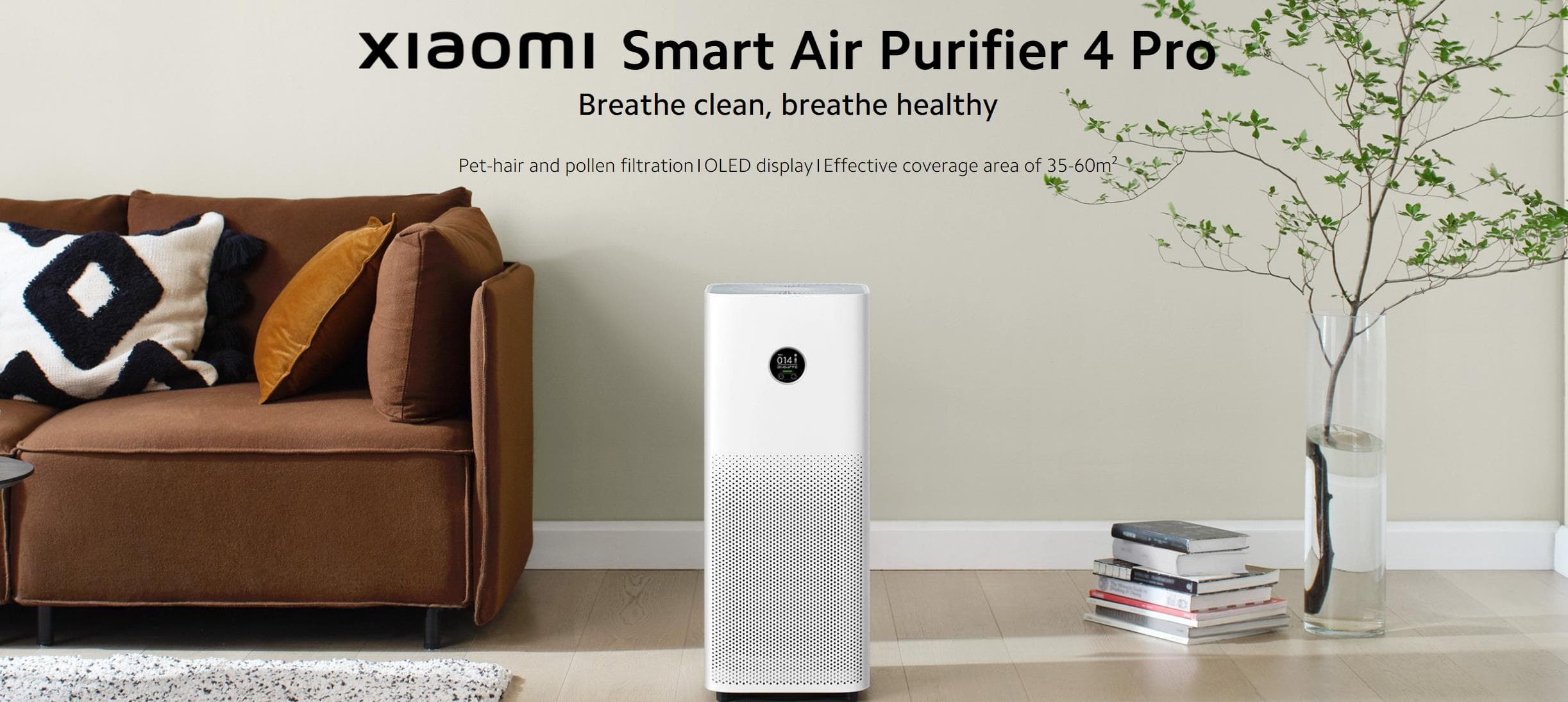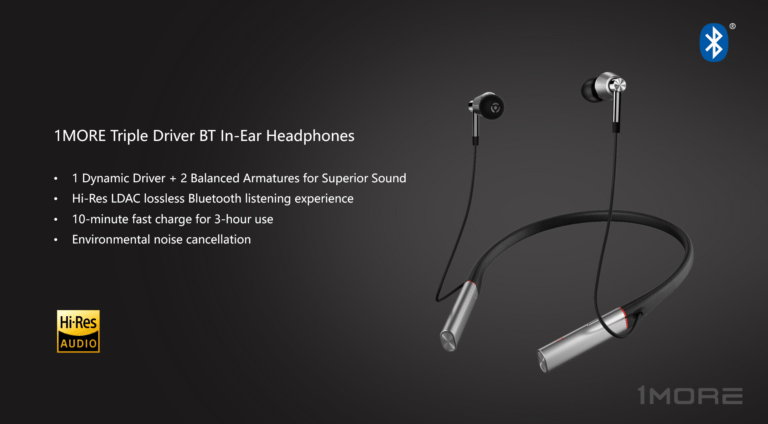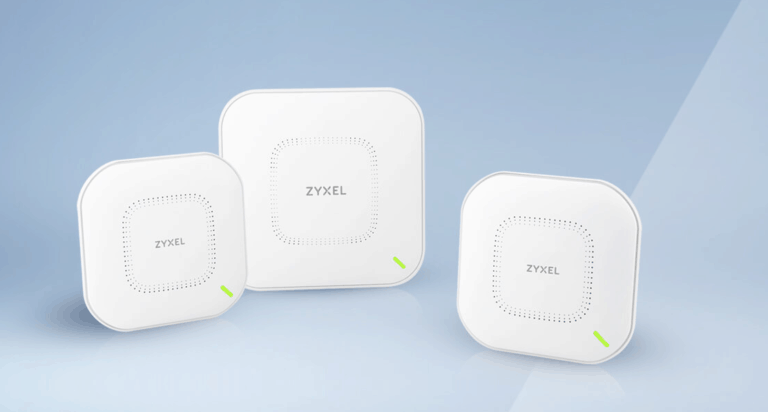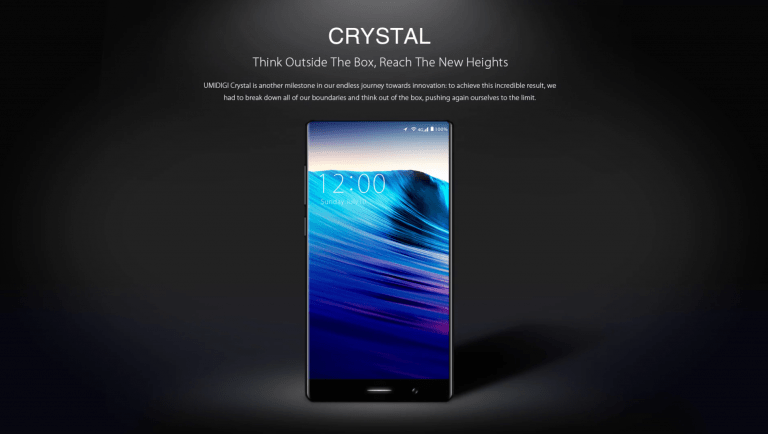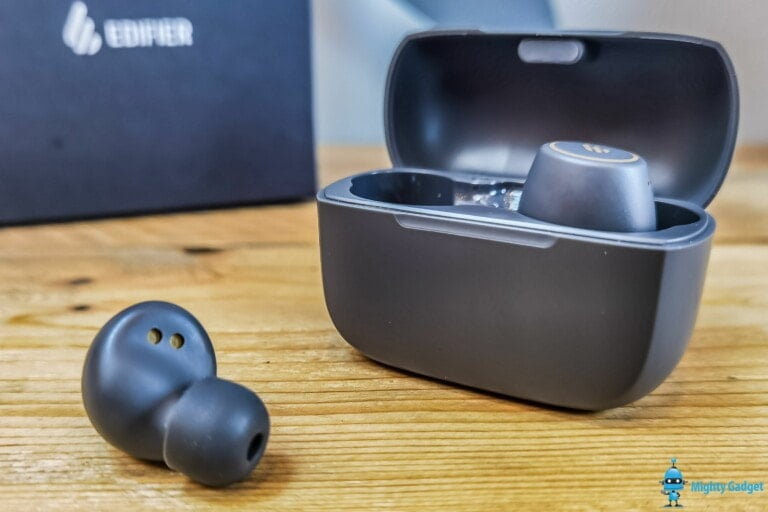Any links to online stores should be assumed to be affiliates. The company or PR agency provides all or most review samples. They have no control over my content, and I provide my honest opinion.
I have previously reviewed the Dyson Pure Cool Tower Fan and attributed its air purifying feature as a significant component in the improvement of chronic nose congestion I have suffered.
I also personally own the well-reviewed Philips Series 3000i and have reviewed some cheaper air purifiers.
The problem is that the Phillips and Dyson air purifiers are quite expensive while cheap brands are not very good.
This is where Xiaomi becomes a good choice. Just like all the other electronics they produce, their range of air purifiers offers a high specification for an affordable price.
Further Reading:
- Best Air Purifiers: For allergies, asthma and reduce smells from cigarette smoke
- Best Indoor Air Quality Monitors
- Dyson Pure Cool Tower Fan Review
Specification:
- Performance
- Three-in-one Filter:
- Pre-filter
- Xiaomi High Efficiency filter ( 26,000cm3 expanded area)
- Activated Carbon filter (650,000mg)
- Particles CADR 500m3/h
- Formaldehyde CADR: 185m3/h
- Filter Lifespan: 6-12 months
- Recommended Cleaning Area: 35-60m3
- Sensors
- PM2.5 Sensor, PM10 Sensor
- Temperature & Humidity Sensor
- Negative Ion Generator
- Power
- Noise Level: 33.7~65 dB(A)
- Power Voltage: AC100-240 V
- Power Frequency: 50/60 Hz
- Rated Power 50W
- Design
- Display OLED
- 4 levels Air Quality Display
- Color White
- Dimensions 275(L)•275(W)•680(H)mm
- Net Weight approx. 9 6 kg
- Detachable Top Grille
- Connection
- Mi Home App
- Google Assistant
- Amazon Alexa
Design and Features
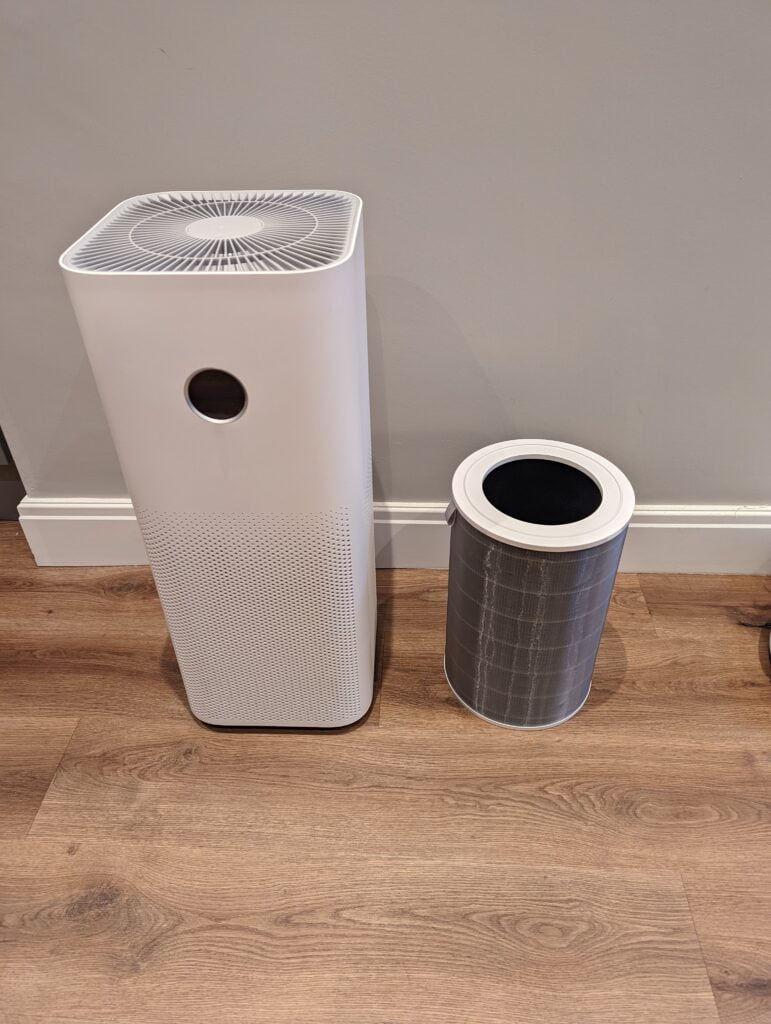
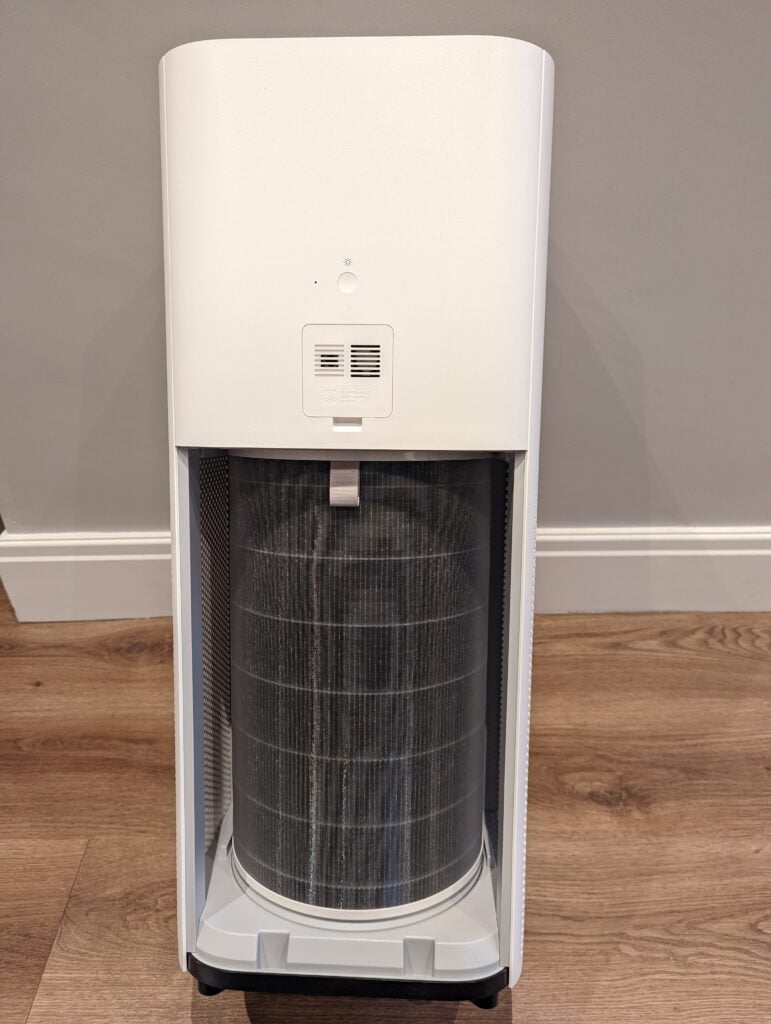
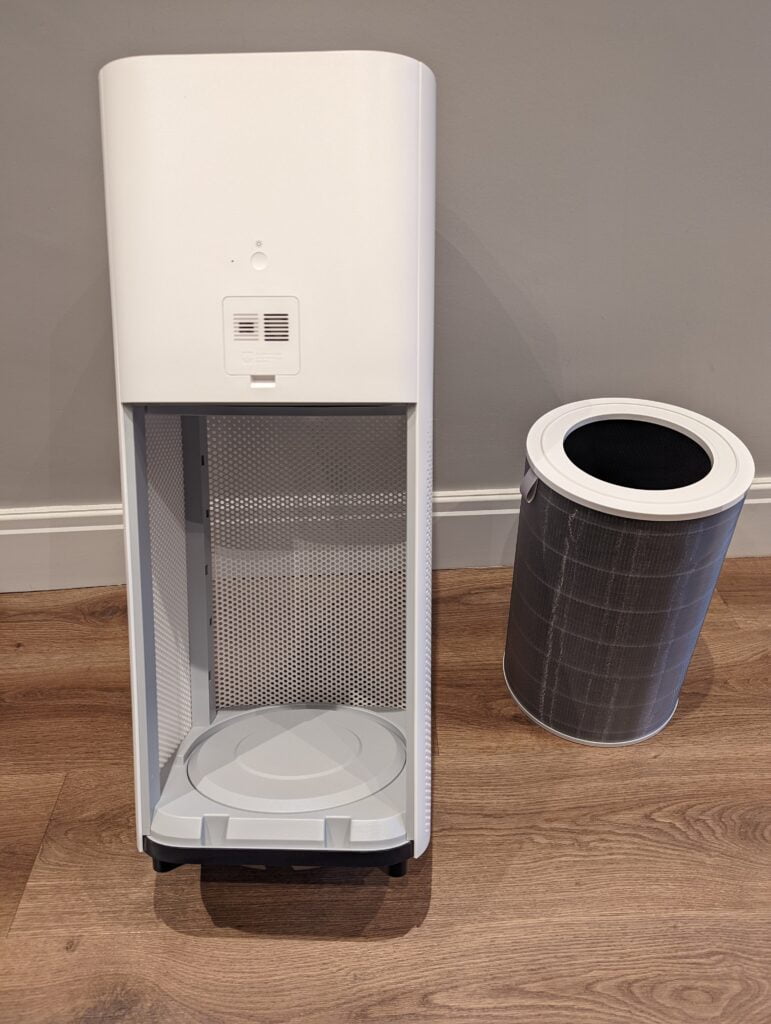

Air purifiers may sound like they will be technically advanced, but they are essentially just a big fan that sucks or blows air through a HEPA filter. The simplicity of these products makes it seem odd how some of them can cost hundreds, if not thousands.
Modern air purifiers justify some of the costs by integrating various smart features. The Xiaomi Smart Air Purifier 4 Pro is one of these. It has all the usual smart features you’d expect from Xiaomi, you can register it to the app, set up schedules, informs you when you need to change the filter, and you can set up smart home routines based on various trigger events.
It will also has a built in Indoor Air Quality monitor which measures particulate matter going down to fine particles at 2.5 micrometres and larger 10 micrometre particulates. It will also measure both temperature and humidity. It then uses this data to adjust the power of the fan, allowing it to run quietly when the air is clean or ramp up when it detects a lot of pollution/particles.
Air purifiers generally are not the most attractive of things. They need to be large to accommodate the large HEPA filters and a big enough fan to push the air.
In the case of the Xiaomi, it’s about as attractive as it can be it is just a big rectangular tube with curved edges, and then you have a display that provides you with the particulate readings plus temperature and humidity.
It’s a surprisingly light air purifier, the bulk of it is just the tubular HEPA filter that sits in the bottom two-thirds of the unit. You then have a fan, and I suspect all the other electronics take up a tiny fraction of the space.
CADR Rating / Clean air delivery rate
Most brands provide a clean air delivery rate in the form of m3 per hour. One notable brand that does not do this is Dyson. They don’t believe in CADR and think it is misleading.
Some brands, such as IQAir claim that Cumulate clean mass (CCM) is more important. Just because an air purifier can run air through its filter at 500m3/h doesn’t necessarily mean it is cleaning the air efficiently and CCM aims to provide more clarity with this. However, most brands don’t use this number, so it is hard to compare.
CADR is therefore the best value we have to gauge the performance of a unit compared to other brands. The Xiaomi Smart Air Purifier 4 has a very big CADR rating of CADR 500m3/h for particulates and then a formaldehyde CADR of 185m3/h.
To calculate the CADR you want for a room, you need to times its volume by the number of air changes per hour. So a living room might be 60m3, and you might want it to do 7 air changes per hour which would give you a CADR of 420 m3/h
Going back to the 500m3/h CADR rating, this is one of the highest I can find compared to the main brands in the business. The only two I can find that are close to this is the Blueair Blue 3410 Air Purifier which does 425³m/hr and costs £300. Then the Philips 3000i Air Purifier, which does 520 m³/h and will set you back £450.
Depending on the final price when this becomes available in the UK, it looks like this will be the best value for money air purifier based on its CADR rating.
Set Up
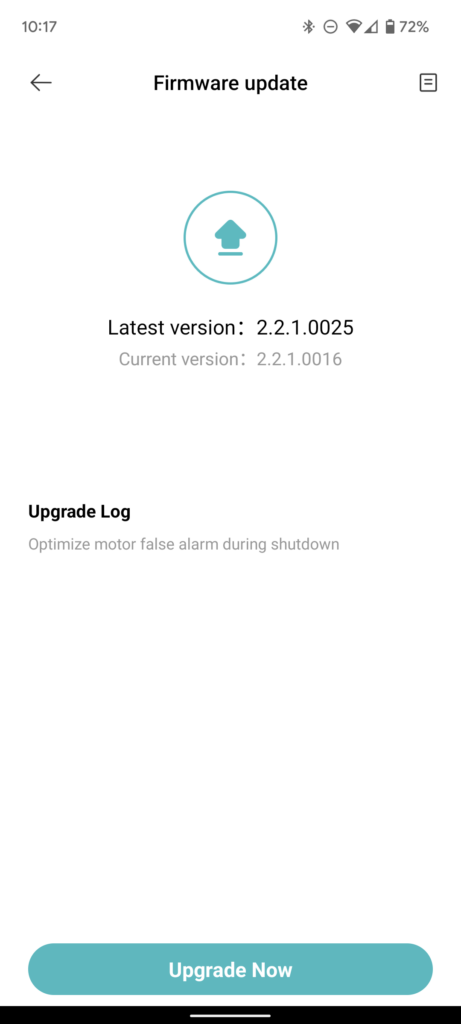
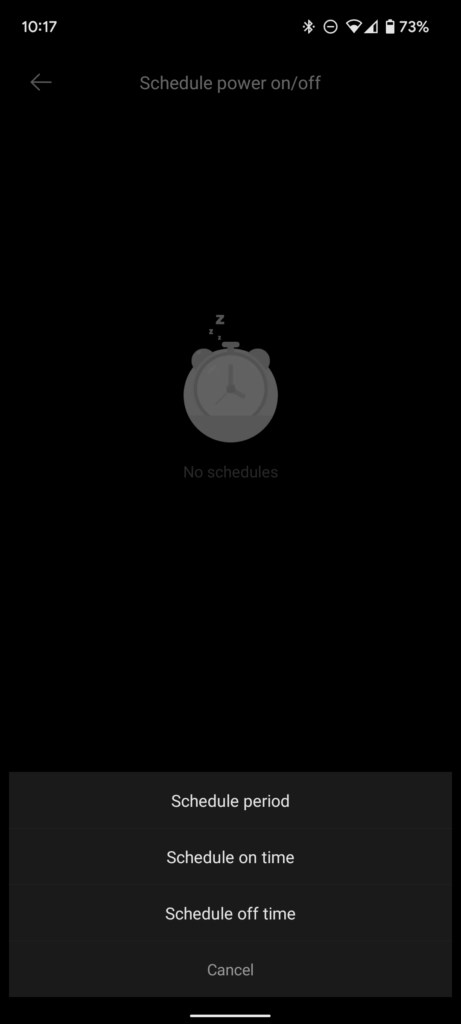
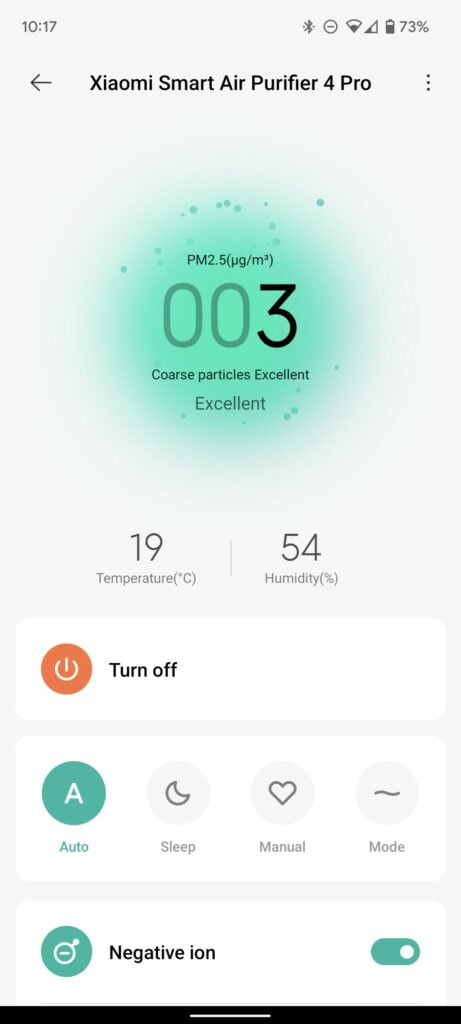
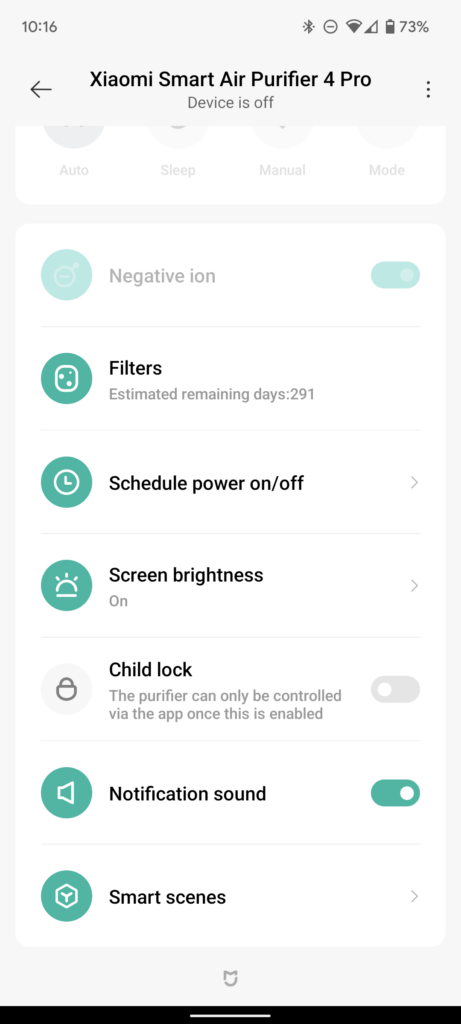
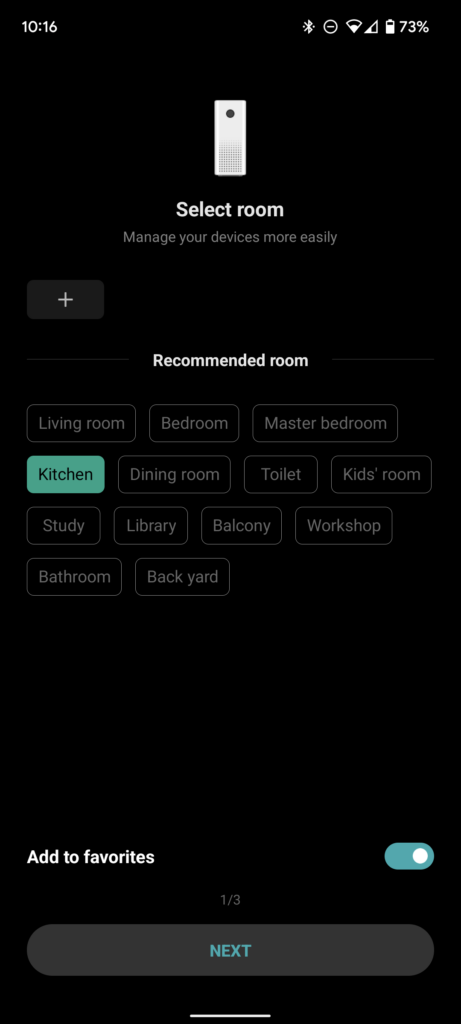

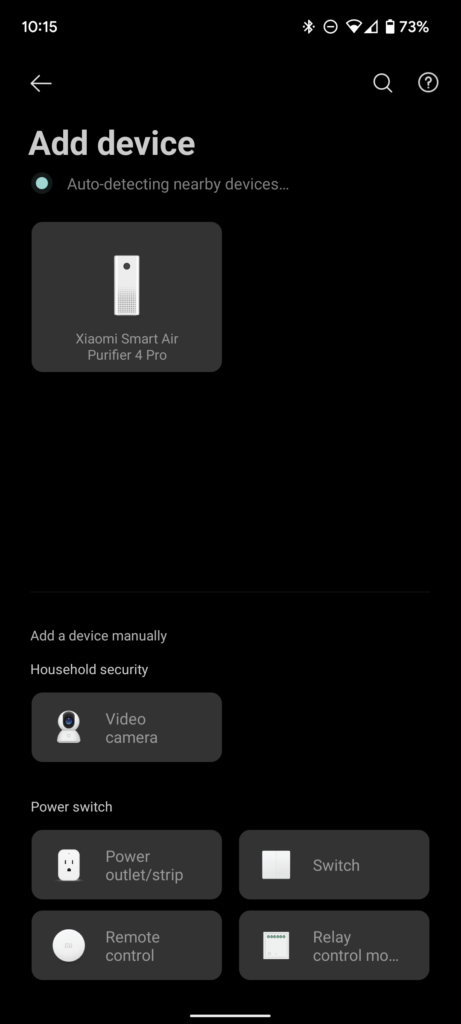
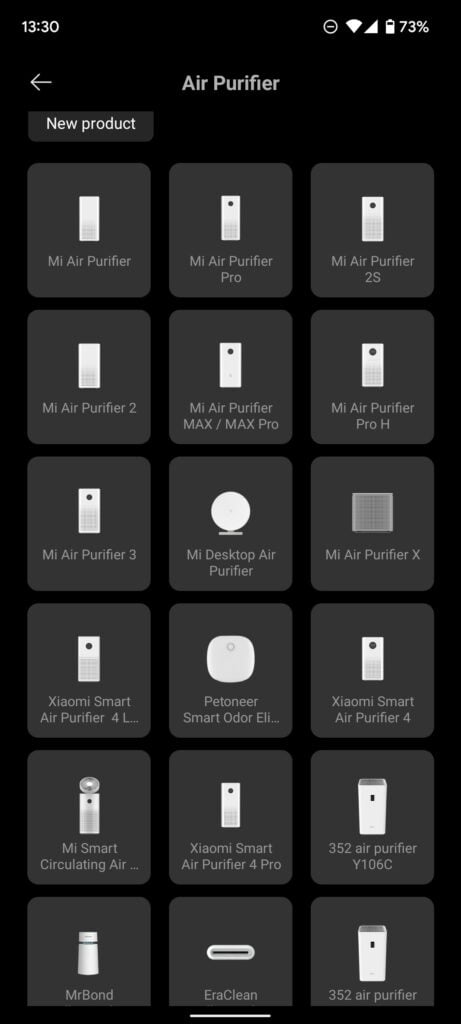
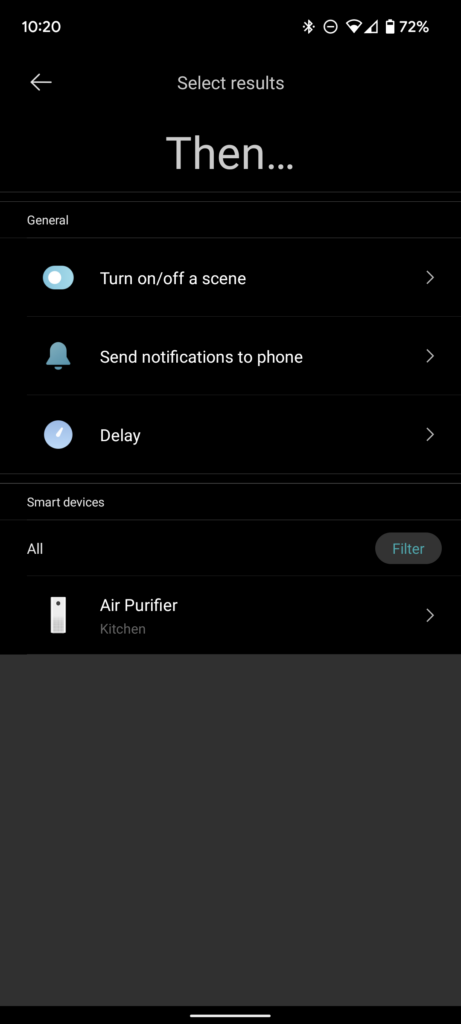


Set up was quite easy, you manage the air purifier with the Mi Home app, which is used for hundreds of different smart home devices.
With the air purifier switched on, the app should quickly detect it when you select add a device. You will then go through some basic set-up questions, including renaming the air purifier.
App & Smart Home Scenes / Automation
The Mi Home app can control all dozens of different smart home devices. Under the air treatment section alone, you have four different categories, and each category has multiple products within this.
You then have a sensor section that includes things like temperature, body, window/door sensors, photosensors and motion detectors.
All these devices can work together as part of scenes. So you might have a motion sensor trigger the air purifier as well as switch on one of the many lights that can be smartly controlled.
Unfortunately, I only have one Mi Home device, so the scenes I can create are very basic. Under the If condition, I have the usual time-based schedules, but I can also activate events based on the sensors within the air purifier. This includes:
- Higher / below than specified temperature
- Higher / below specified humidity
- Higher / below specified PM2.5
I can then use this to switch on or off other scenes or switch on any device I manage. I can also be notified when the event is triggered.
This gives the Xiaomi Smart Air Purifier 4 Pro significantly better smart control than any other air purifier I have used before.
One significant thing missing from this is the complete lack of historical data (unless I have missed the setting somewhere). Most smart air purifiers I have used provide some sort of data going back the past 24 hours/7 days/30 days, and this can provide valuable insight into what is causing air quality issues in your home.
Under the main screen for the Xiaomi Smart Air Purifier 4 Pro, you have all the basic controls you need, including the current air quality.
In Use / Noise / How quick to react
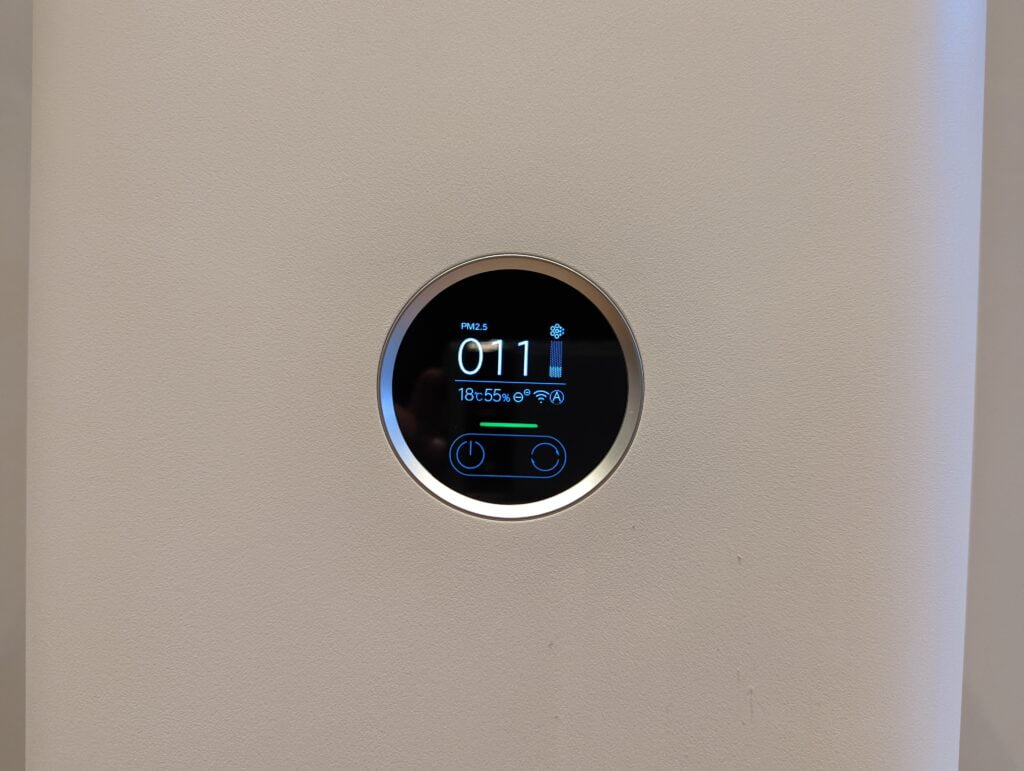
I am based in a coastal town in the north of England, so the quality of our air is not so bad in the first place, and with it being February, I don’t have to worry too much about pollen.
However, I have been very happy with the performance.
The immediate thing that stood out to me was how quiet it is, by far the quietest air purifier I have used. With the office quiet, the noise is low enough that I can’t be 100% sure if it is my desktop PC or the air purifier that’s making a noise, and my PC is very quiet. With my music on in the office or TV on in the office, all abient noise is drowned out.
Obviously, this changes when the air purifier detects particulate that needs filtering. When I have been cooking lunch, I typically come back to find that the fan has been ramped up and the display is showing a significant amount of pollutants. However, the fan is nowhere near as loud as the Dyson or Philips Series 3000i. It sounds more like a pedestal fan on at medium, whereas the other air purifiers can get distractingly loud.
Manually adjusting the speed setting to maximum makes the noise from the air purifier quite intrusive, but far less so than my Dyson or Philips. It is quite surprising considering the 500m3/h CADR. I can only assume this is achieved due to the design, it looks like the fan is particularly large, covering full circumference of the inside of the unit and the HEPA filter is also gigantic.
One issue that has been raised about these smart air purifiers is their ability to respond to air pollution in a timely manner. It has been suggested that these machines often don’t ramp up the fans fast enough or keep them on long enough to keep pollution levels as low as possible. I have no way of testing this properly, but in my experience, Xiaomi responds quickly and only spins down the fan when the PM readings are low. Again, the overall air quality where I live is quite good; maybe if I lived in the centre of London or a more polluted city, this might be more of an issue.
Price and Alternative Options
Update: Pricing for the new Xiaomi Purifier models in the UK is as follows:
- Xiaomi Purifier 4 – RRP £249
- Xiaomi Purifier Pro – RRP £299
The Xiaomi Smart Air Purifier 4 Pro is not currently available to buy in the UK or Europe. It launched in China for 1299 Chinese yuan, which is around £150.
It is due to launch in EU(not UK at the moment) including Germany/Spain/France by end of March, priced at €349 which works out at about £295
The Xiaomi Mi 3H Air Purifier is available for around £150, and Amazon UK has the Xiaomi Mi Air Purifier Pro H for £345
The Philips Series air purifiers start at £215 for the 1000ai small room model or around £350 for the Philips Series 2000i (mid-sized rooms) and £425 for the larger Philips Series 3000i.
The older model of the Philips Series 3000i has previously been as low as £300 back in early 2021, and this has a CADR of 310m³/h
The Blueair Blue 3410 Air Purifier will set you back around £300 and has a CADR of 425³m/hr
Overall
It is hard to give a proper final opinion on the Xiaomi Smart Air Purifier 4 Pro without a better idea of the final price and availability.
My main issue with it is the lack of data reporting that some other devices have, though many are not smart at all. However, the Mi home app has the benefit of being able to integrate with a wide range of smart home devices, which gives you a greater degree of control, allowing you to automate its functions based on other devices and events within your home.
Then, of course, is the incredibly high CADR value. Assuming this is accurate, very few air purifiers match the performance of this regardless of price.
I assume it is going to be cheaper than competing brands, and if this is correct, then it is an outstanding air purifier with unrivalled performance at this price point.
Xiaomi Smart Air Purifier 4 Pro Review Rating
Summary
On the assumption that this is cheaper than competing options from Philips and BlueAir, the Xiaomi Smart Air Purifier 4 Pro is an outstanding air purifier with CADR unrivalled at this price point and smart home integration that is not available with other brands.
Overall
95%-
Overall - 95%95%
Pros
- 500m³/h CADR
- PM2.5/PM10 dual-effect sensor
- Negative air ionization
- Integrates with other Mi Home devices
- Low noise
Cons
- Unknown UK availability
I am James, a UK-based tech enthusiast and the Editor and Owner of Mighty Gadget, which I’ve proudly run since 2007. Passionate about all things technology, my expertise spans from computers and networking to mobile, wearables, and smart home devices.
As a fitness fanatic who loves running and cycling, I also have a keen interest in fitness-related technology, and I take every opportunity to cover this niche on my blog. My diverse interests allow me to bring a unique perspective to tech blogging, merging lifestyle, fitness, and the latest tech trends.
In my academic pursuits, I earned a BSc in Information Systems Design from UCLAN, before advancing my learning with a Master’s Degree in Computing. This advanced study also included Cisco CCNA accreditation, further demonstrating my commitment to understanding and staying ahead of the technology curve.
I’m proud to share that Vuelio has consistently ranked Mighty Gadget as one of the top technology blogs in the UK. With my dedication to technology and drive to share my insights, I aim to continue providing my readers with engaging and informative content.
Last update on 2024-04-24 / Affiliate links / Images from Amazon Product Advertising API

